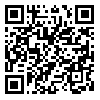Volume 29, Issue 179 (12-2019)
J Mazandaran Univ Med Sci 2019, 29(179): 117-125 |
Back to browse issues page
Abstract: (2249 Views)
Background and purpose: Studies on neurological diseases in Ramadan reported different incidence rates, diurnal pattern, and risk factors. This study aimed at comparing the incidence of neurological diseases and their related factors in Ramadan and Shaval.
Materials and methods: This cross-sectional study was performed in patients ≥16 years of age attending the Emergency Department in Sari Bu Ali Sina Hospital, from the 1st of Ramadan until the 30th of Shaval in 2015. Demographic data and other information associated with neurologic disorders were recorded using face-to-face interviews and the patient’s files.
Results: In this study, the number of people hospitalized with neurological disorders was 166 during Ramadan and 150 in Shaval. There was no significant difference between the two months studied in frequency of admissions due to neurologic diseases (P=0.68). The most common diseases in Ramadan and Shaval were ischemic stroke (36.7% and 40%), seizure (27.1% and 23.3%), and headache (12% and 14.7%), respectively. We did not find any significant differences in gender, age, marital state, incidence and admission time, and risk factors for neurologic diseases between Ramadan and Shaval (P >0.05).
Conclusion: In this study, the admission rate of most of neurological diseases were not significantly different in Ramadan and Shaval. Providing appropriate medical advices could considerably prevent neurological disorders in Ramadan.
Materials and methods: This cross-sectional study was performed in patients ≥16 years of age attending the Emergency Department in Sari Bu Ali Sina Hospital, from the 1st of Ramadan until the 30th of Shaval in 2015. Demographic data and other information associated with neurologic disorders were recorded using face-to-face interviews and the patient’s files.
Results: In this study, the number of people hospitalized with neurological disorders was 166 during Ramadan and 150 in Shaval. There was no significant difference between the two months studied in frequency of admissions due to neurologic diseases (P=0.68). The most common diseases in Ramadan and Shaval were ischemic stroke (36.7% and 40%), seizure (27.1% and 23.3%), and headache (12% and 14.7%), respectively. We did not find any significant differences in gender, age, marital state, incidence and admission time, and risk factors for neurologic diseases between Ramadan and Shaval (P >0.05).
Conclusion: In this study, the admission rate of most of neurological diseases were not significantly different in Ramadan and Shaval. Providing appropriate medical advices could considerably prevent neurological disorders in Ramadan.
Type of Study: Research(Original) |
Subject:
Neurology
| Rights and permissions | |
 |
This work is licensed under a Creative Commons Attribution-NonCommercial 4.0 International License. |



